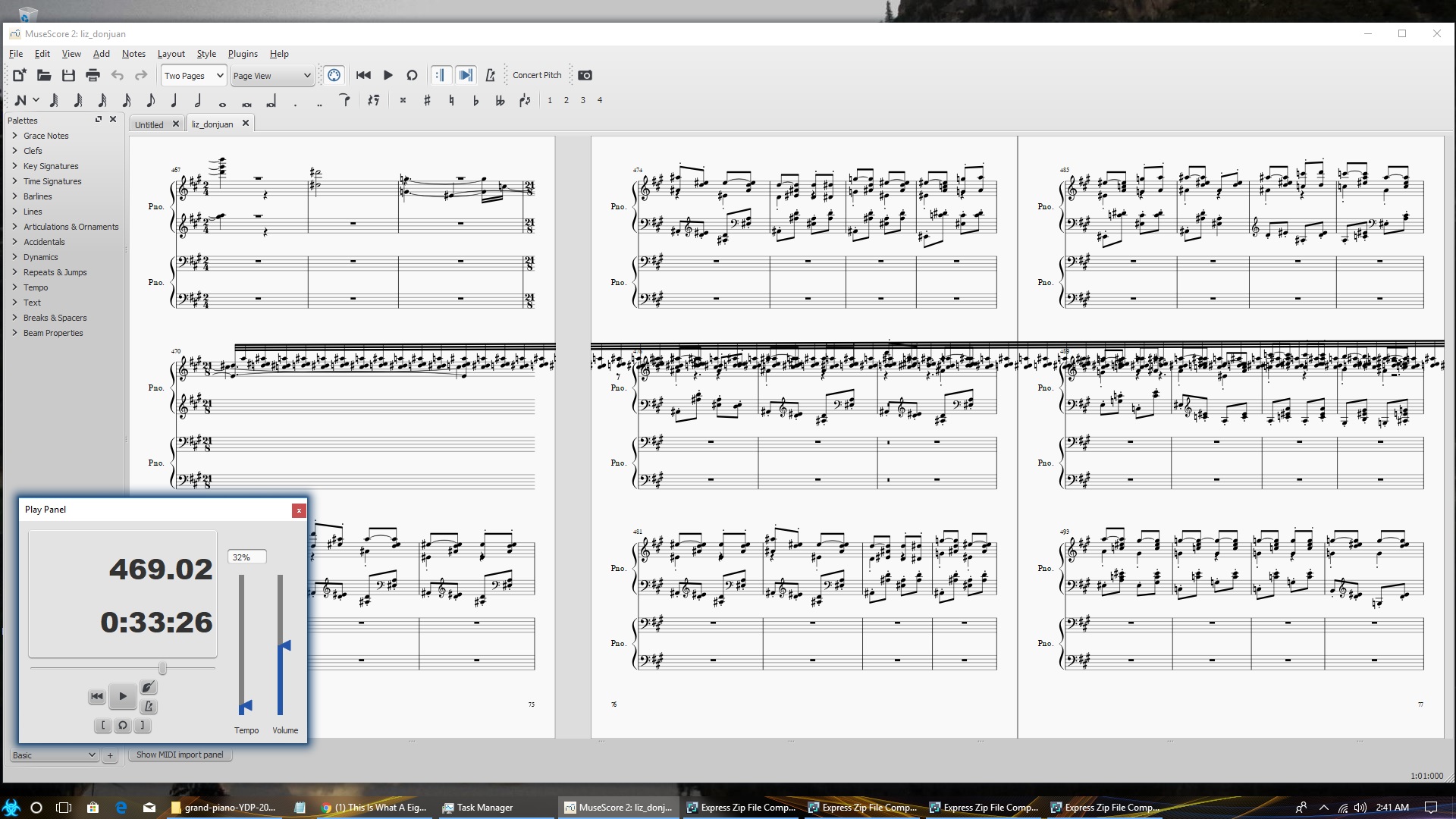

A third hour went to composing the bridge (which I eventually moved from trumpet to oboe, since it had a gentler sound). Another hour in, and my main motif was done: more or less a simple scale, running up and down a B flat chord. (For example, for a C-E-G chord, hit C, Shift, E, Shift, G, in that order.)Īn hour into my project, I'd written the first two measures of the melody. Just one more thing: To write a chord instead of a single note, hit Shift after you input the first note then press the key corresponding to the next desired note. There are other, more subtle ways to add and adjust notes, but again, for going from "zero" to "workable score," this is the fastest method to learn. Or, you can delete the errant note (Del), adjust the pitch (up or down arrows) or change the length (click on the note then click on the desired note length in the upper-left portion of the screen). If you mess up, you can press Ctrl + Z to undo your most recent action, as in most programs.
Musescore android#
MORE: 25 Android Apps That Are Actually Worth Paying For Then, press the letter corresponding to the note, as normal. If you need to add an augmentation dot (most likely for a dotted half note), press the period as well. Remember that, in the treble clef (right-hand piano, guitar, trumpet, clarinet, etc.), the bars in the staff correspond to FACE, while in the bass clef (left-hand piano, bass guitar, tuba, bassoon, etc.), they correspond to ACEG.īy default, everything will be a quarter note, but you can modify this by pressing the number keys: 4 for an eighth note, 5 for a quarter note, 6 for a half note and 7 for a whole note. Then, press A, B, C, D, E, F or G to add the note you want. While MuseScore has tons of options (just look at the View menu to see all the extras you can toy around with), the actual process of adding notes is deceptively simple. I'm not exaggerating when I say it took me as much time to work out a single melody line as it did to write all the rest of the harmony parts put together. Take notesīefore I could have my sweeping space score, I needed something much simpler: a melody. Now, you'll find yourself at the scariest part of the process: facing down a blank canvas. (I went with B flat major, because it sounds heroic.) Likewise, a 4/4 time signature never hurt anyone. If you have absolutely no idea where to start, it's always a good idea to pick C major and adjust from there. In the wizard, you'll also pick a key signature, which is where knowing a little music theory comes in handy. It's easier to start with a woodwind-quartet template and wind up adding some brass later than to start with a rock-band template and have to rewrite the entire thing. Still, it's important to choose your template wisely. My final composition included an oboe, a bassoon, a trumpet and a violin - as well as a timpani and some chimes, because I absolutely could not help myself.

But it's easy enough to change instruments by right-clicking on a staff and then selecting the Change Instrument button under Staff Properties. In the end, only the oboe and the bassoon made the cut. From there, I was able to select the instruments I wanted: a French horn, an oboe, a clarinet and a bassoon. After I toyed around with a few notes, it didn't have the range I was looking for, so I wound up starting fresh, with a blank template.

This gave me access to two trumpets, a trombone and a tuba.
Musescore full#
There are 20-odd templates, with everything from a bluegrass band, to a string quartet, to a full orchestra.ĭrawing on the theme to Star Trek: The Next Generation as an inspiration, I selected the brass-quartet template. The next screen is more important, because it's where MuseScore will ask what kind of piece you want to compose. When you click on Create New Score, you'll get a wizard to walk you through the basics, including the title and composer. Assume that you'll have to do without it, although the program maintains a helpful how-to database online. This is an excellent resource - but after I closed it, I was never able to find it again.
Musescore install#
Note that when you first install the program, you'll see a prewritten piece, which explains the basics of the program in an interactive fashion. With that out of the way, getting started is easy enough.


 0 kommentar(er)
0 kommentar(er)
